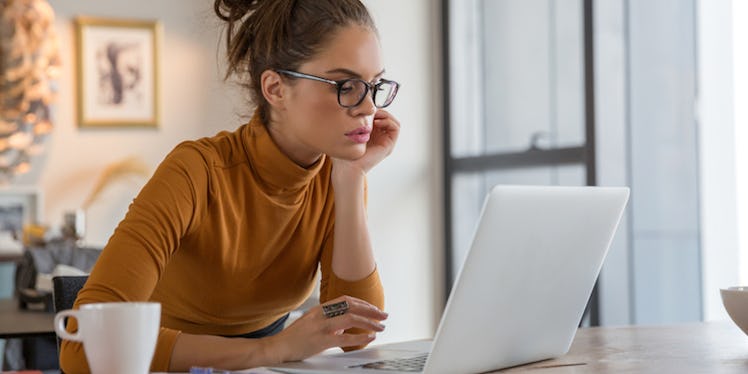
5 Ways To Avoid The Strain Technology Puts On Your Health
Growing up with the latest technology in your hand, including the internet, has major advantages -- but it comes at a cost. Generation Y may be tech savvy, but we are also spending way too many hours in front of our devices.
According to Mashable, four in 10 Millennials spend nine hours daily in front of a blue screen.
I don't want to contradict them, but I personally spend way more than that locked in front of a screen. We mostly think of our laptops when we say blue screens, but mobile devices count too. Now that changes things, right?
A recent study conducted by the Vision Council showed that 68 percent of Millennials suffer from digital eye strain, also known as DES. This condition appears after staring at the blue screen for two hours. So, if you are simply watching the news you could develop DES. Match this with the average nine hours spent in front of the screens and we're in deep trouble.
The problem doesn't come from reading the text, it comes from the blue light of the devices. This light is known as high energy visible (HEV) light, which penetrates the eye deeper than regular UV light, damaging the retina. On top of this, staring at the screens makes us blink less frequently, so the eye becomes dry, and prone to irritation.
If you have red, watering eyes, or you have frequent headaches, you might be already suffering from DES. The good news is, it can be prevented.
Wear Special Computer Lenses
There are special lenses which reduce the amount of blue light that hits your eye which reduces the chance of developing DES. You can pick glasses, or rock a pair of lenses, if you're serious about protecting your eyes from damaging effects.
Larger Text
Many headaches are due to squinting when focusing on the text. To solve this problem, you can just increase the text size on your screen. This is more commonly seen amongst baby boomers, but if you want to have an eyesight when you're their age, you should be doing it too.
At the same time, ensure the distance between your eyes and the screen is at least one foot.
The 20-20-20 Rule
It may sound stupid, but this rule can help you protect your eyes.
Every 20 minutes you should be looking away from the screen, to something located at 20 feet away from you. You can use this rule as an opportunity to take a break, and have a small walk from the desk.
Adjust The Display Settings
In order to protect your eyes, your screen brightness level should be similar to the environmental light. Dim the lights, so they're not adding to the eye strain and change the background from white to cool gray.
Adjusting the contrast settings also helps reduce the eye strain. It'll take you some time to adjust with these settings, but resist the temptation to switch them back to how they originally were.
The Ultimate Solution: Glare Reduction Screen
Older Millennials still remember those strange screens we were installing on the screens. Their purpose was to reduce the damaging rays of the old, low tech monitors of the '90s. The same principle can be applied these days in order to reduce the blue light and counteract the glare.
Invest in a glare-reducing filter for your screen, which will reduce strain on your eyes. Keep both the filter and the screen of the device clean at all times -- dust and debris make you squint more.